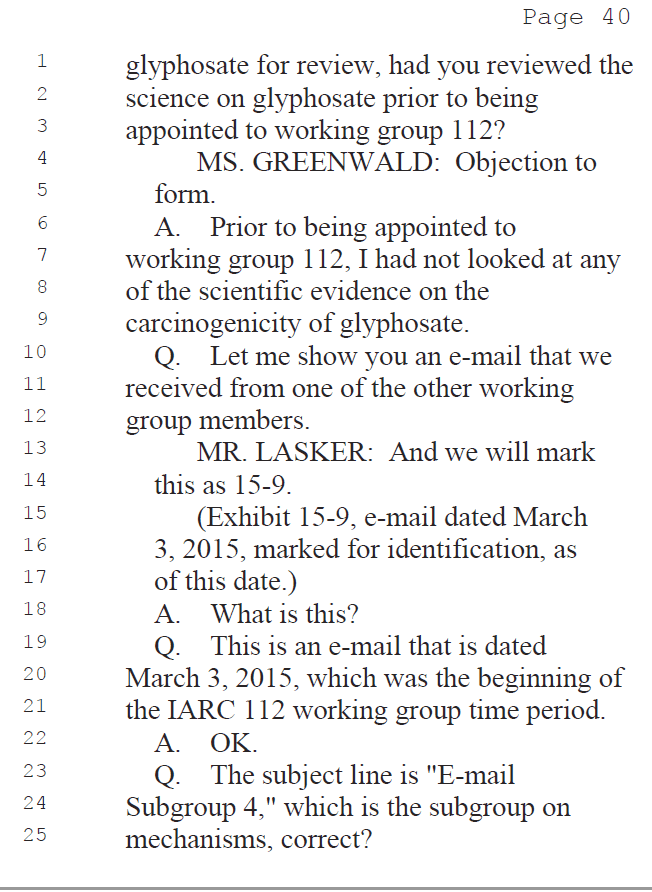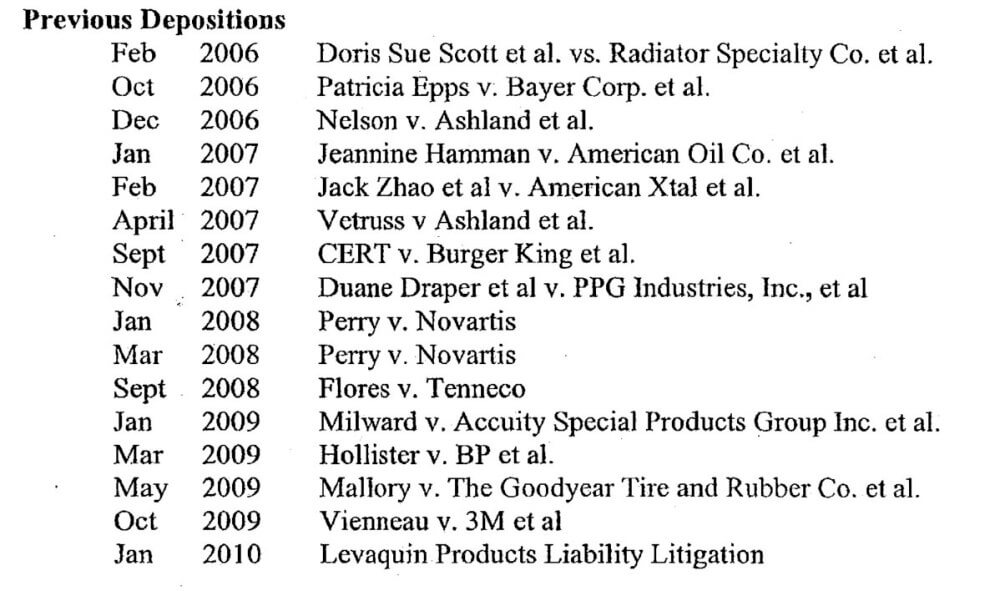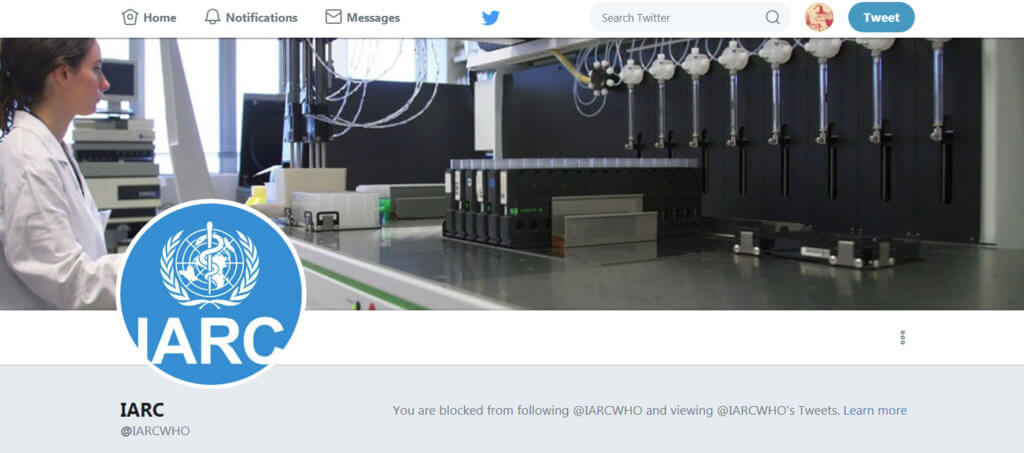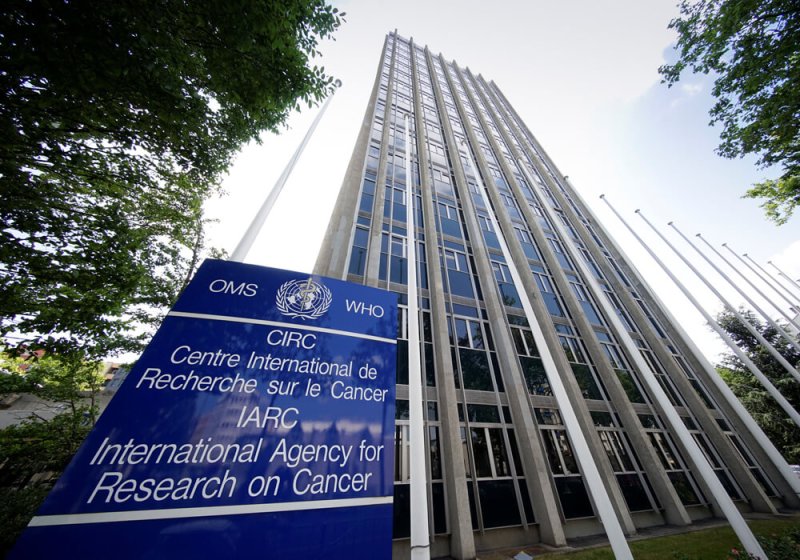In February 2019, I released my most damning exposé on corruption inside the International Agency for Research on Cancer (IARC), revealing four egregious scandals in one article. As the research was thorough, the article was quite long. It was also a sub-section of a complex series on how US tort law firms are manipulating scientists and the regulatory research process. I have been advised to rewrite the content outside of the SlimeGate series vocabulary putting them into shorter articles. So the content of that exposé has been broken down into four separate scandals presented with clearer vocabulary and images.
This section, still focusing on the benzene monograph process, will look at how IARC cherry-picks their Monograph Working Group members regardless of conflicts of interest and then hides, lies and changes documents to cover it up.
Conflicts of interest only concern other people.
That is the naive myopic belief of many of the Good Old Boys who regularly meet up at IARC in Lyon en route to a chateau in central Italy. IARC to this day has no clear understanding of what a conflict of interest is (or doesn’t care). This article will demonstrate how this attitude is corrupting IARC and destroying its credibility.
In 2005, the IARC Monograph Preamble was rewritten to limit conflicts of interest to employment (ie, if you worked for industry) while leaving it to IARC to determine exceptions. This came at a time when IARC was recovering from an internal scandal where NGO groups complained that certain industry actors had got too involved in the process (and the pendulum has now swung to the point where the agency is virulently anti-industry).
In an amusing email exchange among the IARC Good Old Boys network, they were groping to understand what should be considered as a conflict of interest. What is meant by financial interest? Is it only employment in an industrial group? What about advising? What about benefiting from IARC involvement? Non-profits? In the end, the high priestess intervened to draw the conversation to an end.

IARC though is quite cavalier on the determination of a conflict of interest. There is a spirit of “Don’t Ask, Don’t Tell” and if you do tell, they will decide what, if anything, to report. If the lead author or chair does not like the person’s views, then they will find a conflict of interest. As many of the IARC Good Old Boys network are quite zealous in their views of their own activities, they firmly believe that conflicts of interest only concern other people.
IARC’s ‘Good Old Boys’ Network

You keep seeing the same names showing up at IARC monograph meetings regardless of the subject or the science. On top of regulars like Smith, Goldstein and Infante, Chris Portier has expressed his views (often as a chair) on everything from mobile phone radiation to glyphosate to diesel exhaust fumes to benzene. Another IARC visiting scientist alumni, Jack Siemiatycki showed up for an eclectic mix of subjects from talc to mobile phone radiation. Others like Ronald Melnick or Charles Jameson, each representing consulting companies in their personal names, are on IARC Working Groups so often they must own property in Lyon.
All seven of these scientists also consult for US law firms in court cases against industry. All of them (except Jameson) are fellows of Collegium Ramazzini. All of them have written or signed articles defending IARC, its process or its monographs. These Good Old Boys are selected to participate in monographs regardless of their expertise (or, in the case of Portier’s admission, lack thereof).
So how do I get a piece of this lucrative network? First I need to get accepted into the Collegium Ramazzini (a type of Rotary Club for activist scientists that meets every year in a Tuscan village for some nice wine). It would also help if I am friendly with IARC’s main financier, Linda Birnbaum. Taking a six month sabbatical as an IARC visiting scientist will help me get to the next level and chair meetings. Of course it goes without saying that I need to be an outspoken zealous activist aggressively attacking industry.
There is no doubt that IARC staffers cherry-pick from their trusted network of Good Old Boys. I have shown elsewhere how IARC cherry-picks their scientific literature. It is normal to want to hang with your friends and people who think and publish like you. But it is not very scientific, ethical or responsible if you do this on behalf of an international scientific agency tied to the WHO.
But what if you’re not part of this network and your government nominates you to attend a meeting?
When the US government Department of Health and Human Services (responsible for the US involvement in IARC) nominated a retired scientist to participate in 2018’s IARC Advisory Group on the revision of the Monograph Preamble (the rules and procedures for IARC monographs), it is quite remarkable that IARC’s Kurt Straif rejected their largest member’s nominee outright. Simply put, he was not part of their Good Old Boys Network and perhaps might have views critical of the status quo.
This organisation is corrupt to the core!
Being a Litigation Consultant is a Conflict of Interest
Let’s be clear: If you are paid $500 an hour to prepare and present depositions and testify in court as an expert witness for plaintiffs suing organisations for cancers they allegedly got from exposure to certain substances, and then you turn around and go to serve on an IARC panel that will produce a monograph which links that substance to the cancers you are getting paid for, it seems patently obvious you have a conflict of interest. You have, quite often, millions of dollars depending on “things going your way” and the last place you should be allowed to show your face is at some cancer agency in Lyon.
A good example of someone who should be excluded from IARC would be Martyn T Smith. At the time of the second IARC benzene monograph in 2009, Martyn had a pretty good side business going on. See a list of depositions below (a majority being benzene-related) from his CV from that period and ask yourself whether he had time to do anything else. Depositions usually involve providing research documents and background information (much more if there is a Daubert hearing) and can last months.

With this much personal investment in the litigation process, Martyn T Smith would stand to do even better if IARC were to reinforce its benzene cancer assessment. On top of that, in the 2009 monograph on benzene, Smith managed to ensure IARC cited 12 of his academic papers further boosting his personal prestige (another type of benefit in kind). Would academics not present at the meeting with papers Professor T Smith disagreed with enjoy the same exposure?
How much is too much?
Any amount of remuneration can be considered enough to create a conflict of interest. Generally, gaining personal influence is in itself a conflict (of influence). If sitting on a panel will help a scientist’s career prospects, then this has to be considered. In other words, the revolving door of scientists leaving IARC to go to sign consulting contracts at US law firms should exclude them from any further involvement with IARC. … Unless that is part of IARC’s intent.
How much money can a scientist make using their week as an IARC panel member on their litigation consulting CV? Since this information is not usually made public, that is very hard to say with certainty.
Here is an example of one time-sheet for the preparation and drafting of a single expert report (filed by Chris Portier to Weitz & Luxenberg from his glyphosate deposition). These numbers are banked well before any time-sheets for witness testimonies are clocked in (and all the more impressive given that Chris had admitted under oath that before the IARC panel meeting, he had never looked at glyphosate, ie, he was not a legitimate expert).

Multiply this amount by 16 in Smith’s case and you can get an idea of some baseline figures before an IARC-hardened litigation consultant even shows up in court or at a deposition.
IARC thinks this is OK

In an ideal world, IARC should only accept scientists with expertise in a field and who do not work as litigation consultants. Then again, in an ideal world, IARC should not be wasting time and money with these useless hazard assessments. This is not an ideal world we live in.
Martyn T Smith (MTS) and Bernie Goldstein (BDG) had the audacity to participate on the second IARC panel on benzene in 2009 at the same time as they were consulting for law firms suing benzene manufacturers (at least Peter Infante recognised the conflict and only attended as an observer). More audacious is how Smith admitted he had been taking money from both the defence and the plaintiffs in benzene lawsuits. (I am not even going to get into their quality issues where judges conclude their science and testimony is unreliable.)
How could these consultants not be able to recognise that receiving hundreds of thousands of dollars per case to depose and testify that benzene is a carcinogen was considered a conflict of interest for going to IARC to determine whether the substance is, indeed, a carcinogen? Worse, how could IARC have not only accepted these two Good Old Boys on the panel, in full disclosure, but even proudly announce it (see Lancet Oncology publication)?
On its own, this flagrant misuse of conflict of interest rules with Goldstein’s and Smith’s involvement demonstrates how loathsome and cavalier the IARC monograph programme and its officials can be regarding rules, methodology and ethical principles (especially when it comes down to helping out with financial opportunities for some of their “Good Old Boys”). Keep in mind this conflict of interest is nothing compared to the moral repugnance of forcing IARC to hold a week-long monograph meeting to improve their consulting opportunities with the law firms they are contractually tied to.
But it gets worse.
Hiding the Conflicts of Interest
Is it correct for a WHO agency like IARC to publish a monograph and then secretly go about changing the document? This was the subject of a Reuters special report which IARC vehemently denied. That denial is understandable as rewriting content in a published monograph would suggest IARC does not respect basic rules of scientific integrity.
What is once again indicative of the lack of scientific integrity at IARC (which has sadly become worse since Elisabete Weiderpass was announced as the new head), IARC discovered (probably only recently) that it was not acceptable to have scientists actively consulting for law firms while serving as full members on IARC panels that can affect the outcomes of such cases. So the WHO agency in Lyon quietly edited Martyn T Smith’s conflict of interest declaration out of its Monograph 100F page (see Lancet Oncology image above with CoI). In the updated Monograph 100F page on benzene, Martyn is no longer declared as actively consulting for tort law firms on benzene. But they could not get the Lancet Oncology to bend basic scientific ethical rules and rewrite a science publication.
See the updated IARC page on the benzene panel participants.

Smith’s declaration of his conflict of interest as a litigation consultant seems to have fallen off of the page. Why is this? Perhaps Smith demanded that IARC remove his declaration. Frankly, if you are a highly-paid expert witness testifying for both sides of a lawsuit, this suggests you are slimier than the average litigation consultant and I could understand why you would like to hide such despicable behaviour. Or did IARC belatedly notice this “Oopsie” and go back and try to hide it?
Of course IARC claims, according to their Preamble, that their “staff do not revise the Monograph text”; only the Working Group can make changes.

IARC has lost the public trust and the respect of the scientific community. Their work is only valuable to activist campaigners and toxic tort lawyers.
Getting Better at Deceiving

IARC’s seemingly regular release of press statements defending the agency against media exposés is indicative of how scandal-hardened these IARC officials have become. Last year I had exposed their post-publication editing of the IARC Advisory Group Priorities Recommendations report to pretend that Christopher Portier had declared his interest as an employee of the Environmental Defense Fund at the panel meeting (when in fact he did not or IARC had decided not to publish it). I used Wayback Machine to show this (see images).
This time, in erasing Martyn T Smith’s conflict of interest from Monograph 100F, the IARC web team removed any crumbs that could show the page updates and history on web archive sites like Wayback Machine. Unless a screenshot was saved or downloaded, there is no proof of what the IARC monograph text actually said at the time of its publication.

This is a smart way to hide improper actions but sometimes such integrity compromised individuals can be pretty stupid. In the website http address, the geniuses at IARC left the update information in the link: page upload as 062018.
– It’s clear IARC are ethically challenged (corrupt) in quietly editing published documents.
– It’s clear they were trying to not get caught.
– It’s clear they were not very good at it.
… And IARC loves to boast how transparent they are. … Pity.
In quietly changing their monographs post-publication, while declaring to journalists that they never do that, IARC is behaving like a guilty party trying to cover up its transgressions. But this WHO agency comes across like the little boy with his hand caught in the cookie jar (and quick to lash out at anyone who notices). When will IARC learn to be responsible, honest and, well, mature?
————————
IARC is morally bankrupt and there is no indication of a will to change. These quiet “updates” of previously published pages have been taking place on the new IARC director’s watch. Elisabete Weiderpass has proven that she is ready to play hardball with anyone who threatens her agency.
Let’s see what else they are trying to hide. Part 3 will consider how this corruption in IARC applies to the glyphosate monograph.

What I found when I went to twitter to see how Weiderpass’ first day as Director went.
David Zaruk has been an EU risk and science communications specialist since 2000, active in EU policy events from REACH and SCALE to the Pesticides Directive, from Science in Society questions to the use of the Precautionary Principle. Follow him on Twitter @zaruk
This piece originally ran at the Risk Monger as The Corruption of IARC 2/4: Hiding Conflicts of Interest































